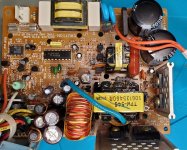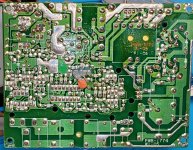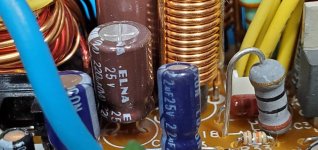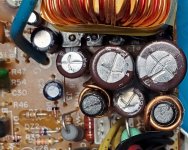Recently I acquired a Packard Bell 80386 SX system which had a marginal power supply. After close inspection I discovered a number of leaking capacitors (you can read all about it here). I also own a Packard Bell 80486 DX system which is just slightly never than the 80386 system. It's power supply appears to be OK in that it delivers the expected voltages. However, given it is a Packard Bell system and the issues with the 80386 system I decided to inspect the 80486 power supply. I just removed the top cover and cannot see anything which looks to be an issue. I identified one ELNA branded capaitor (these were the ones which failed in the 80386 system) but it looks to be holding out OK.
I know there's a lot of different opinions on recapping something which doesn't appear to need recapping. But I thought I would throw it out there to get opinions. It's not especially difficult or expensive to recap these power supplies but I would prefer not to if there's no need to do so. What does the forum say?
I know there's a lot of different opinions on recapping something which doesn't appear to need recapping. But I thought I would throw it out there to get opinions. It's not especially difficult or expensive to recap these power supplies but I would prefer not to if there's no need to do so. What does the forum say?





